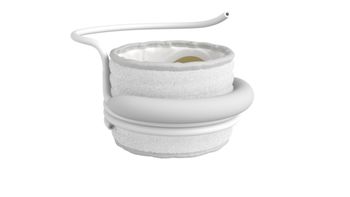
Using the EHR to Reach Vulnerable Patients During COVID-19
Your system already has capabilities that can help.
The COVID-19 pandemic is changing the way physicians practice medicine, especially how they communicate with and reach the most vulnerable patients, says Hudson Plumb, senior vice president of strategy & digital innovation at Heartbeat, a healthcare marketing agency in New York. Plumb also runs Threshhold Solutions, which specializes in the development of products and services leveraging Health Information Technology (HIT), Electronic Health Records (EHR), health system programs, and population health programs.
Plumb recommends that physicians turn to capabilities already within their EHRs to increase patient engagement now that the majority of clinical appointments have shifted to tele-health visits.
“One of the things you can do in the EHR is generate lists of patients that meet specific criteria, often referred to as a patient pursuit list or data-pulls that are scheduled to be seen in the next month or two months,” Plumb instructs.
Similarly, the EHR should be able to generate lists of patients in high risk groups, such as those on immunosuppressive therapies, or with diseases such as diabetes, heart failure, COPD, or who are over 65.
Physicians, or appropriate staff, can then reach out proactively to these patients, he says, to either provide them with information or education, and invite them to schedule a tele-health visit to discuss their health.
This will also help physicians prioritize who needs to be seen most immediately, moving on down to the less high risk patients.
Once patients are identified, Plumb also recommends that physicians or staff prepare an outbound communication in the form of either an email or text that allows patients to know their physicians are looking out for them, and there to answer questions as needed.
The communication can include information with recommendations for staying healthy, as well as details on how to get ready for a tele-health call to reduce the need for educating patients on using their technology during the visit.
“This saves the doctor and their teams lots of time trying to do a whole bunch of outbound calling. It can be much more systematized,” Plumb says.
Without the EHR to help sort patients into relevant groups, Plumb says, “You could be in a position of trying to get your staff to pore through [patient] schedules.” Additionally, patients may not answer the phone if they don’t recognize a phone number, he says.
Communicating with patients in this uncertain time can alleviate patient anxieties and answer their questions. Plumb says certain tests may even be administered remotely. Getting used to working in this way is not only smart during a pandemic, Plumb says, it may become essential to the future of medicine, in which tele-health engagement is likely to remain high.
“Even after COVID-19 is hopefully behind us, we may see a sea change in how doctors and patients engage,” he says.
Increased tele-health use would open healthcare access to numerous populations that may already struggle to get healthcare, from people who live in rural areas, to patients that struggle with transportation or poor health or find difficulty getting to their doctors’ offices, he says.
“This may end up being an important move forward that was driven by a crisis, but resulting in some benefits,” he says.
Fortunately, the Centers for Medicare and Medicaid Services (CMS) have relaxed older standards insisting tele-health visits only be conducted in medical centers or doctors’ offices.
“Physicians can document and code the visit in the EHR just the way they would an in person visit,” Plumb says.
By doing the legwork to reach out to vulnerable patients now through targeted EHR lists, physicians can maintain healthy practices, Plumb suggests.
Newsletter
Stay informed and empowered with Medical Economics enewsletter, delivering expert insights, financial strategies, practice management tips and technology trends — tailored for today’s physicians.








